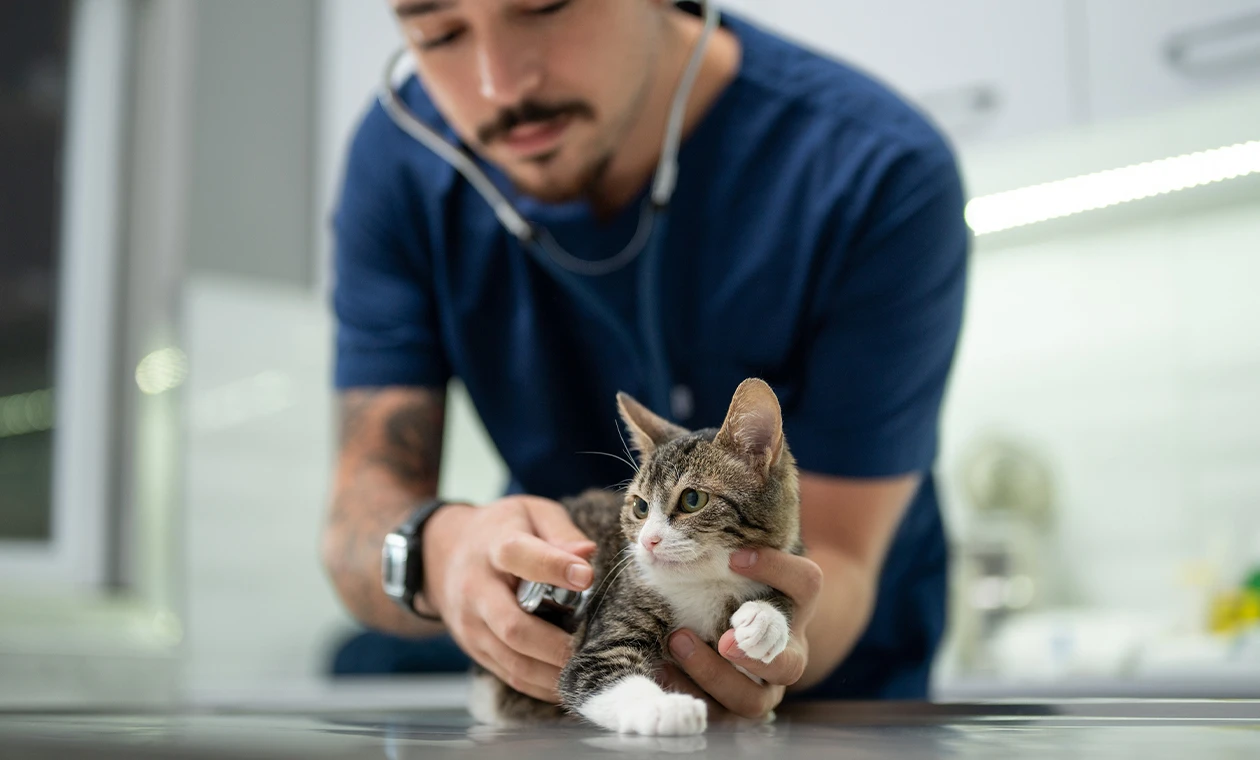Southern
Veterinary
Conference
Birmingham, AL
/
August 7-10
/
100+ CE Hours



Dirofilaria immitis is an extremely common and often life-threatening parasitic infection, with ≈ 1million dogs testing positive annually in the U.S. While the condition is common, there are still many misperceptions concerning the life cycle and transmission of this mosquito-vectored disease. Additionally, numerous questions still arise concerning the accuracy of diagnostic procedures, and resistance to the preventatives and proper adulticidal therapy. This presentation will attempt to provide insights into our changing understanding of heartworm infections in dogs and the opportunities that exist to provide better protection for our pet companions.
Control of tick infestations and tick transmitted diseases can be difficult and frustrating. Reports of product failures are common and resistance are often blamed. However, various biologic and ecologic factors are actually responsible for most perceived control failures. One area of specific importance is the documented range expansion and increased density of several important tick species and associated tick-borne diseases. This lecture will highlight the host, habitat and climatic factors that have contributed to changes in tick distribution, density and seasonality. Information will also be presented on how changes in tick range and density have contributed to spread of tick transmitted diseases. Current data on tick product performance and implementing effective tick control strategies will also be discussed.
This seminar will highlight several of the important advances in our understanding of flea biology that have had direct impacts on development of control programs, including the parasite-host relationship of C. felis, differences in male and female develop times, the critical concept of premises biomass and host acquisition. In addition, major changes in product development and implementation of flea control programs occurred following advances in our understanding of the residual speed of kill and reproductive break-points of insecticides. Data generated in in-home investigations have repeated demonstrated that the systemic isoxazolines can effective eradicate flea infestations and provide rapid reduction in pruritus and improvement in clinical signs of Flea Allergy Dermatitis (FAD).
Ancylostoma caninum is a common and pathogenic hookworm species of dogs that has been historically easy to manage with a wide array of anthelmintics. However, in recent years there have been a number of reports of anthelmintic treatment failures. These cases were at first confined primarily to retired racing greyhounds, but more recently have been documented in more than 20 dog breeds. Multi-Anthelmintic Drug Resistance (MADR) is now well documented and new diagnostic approaches and treatment options are being developed. This seminar will detail the current state of knowledge on MADR in Ancylostoma caninum and provide an update on potential treatments.
While giardiasis is common it certainly is not routine. Questions concerning what is the best diagnostic test and the most effective treatment persist. Issues concerning zoonotic potential and public health implications are difficult to ascertain. This seminar will provide an update on the diagnosis, control and zoonotic potential of giardiasis in dogs and cats.

ABCDE’s of common emergency situations.
Description coming soon…

Feline allergies can be frustrating for both the veterinary clinician and the owner. Effective client communication is a key factor in having an improved rate of success. This lecture will focus on what we know about allergies in cats, including clinical signs and the lack of effective treatment options when compared to their canine counterparts. Focus will be made on communicating the issues to the concerned per owner.
Bacterial infections, especially those resistant to multiple classes of antimicrobials, are a constant burden on the veterinary clinician. It is becoming more and more challenging to manage these infections which are often secondary to underlying issues. This lecture will cover the pathogenesis, diagnosis, and treatment of bacterial infections in veterinary patients. Special focus will be dedicated to how bacterial infections can complicate other, underlying disease states.
Adverse food reactions can often go undiagnosed in patients for several months to years. There have been several recent publications focusing on the understanding of adverse food reactions in dogs. This presentation will include a discussion regarding the current understandings of the canine diet and its role in allergic disease. Pathogenesis, cutaneous signs, and clinical management of adverse food reactions will be addressed.

We all see itchy kitties in practice. In this session, we will examine how we can help our itchy feline friends, focusing especially on feline allergic skin disease. We will delve into what’s new in feline allergy with an emphasis on diagnosis and therapeutic modalities. Cases will also be presented.
In this session, we will discuss various tips and therapies that I use to help my derm patients and that you will be able to use to help your patients as well.
Exciting clinical updates for the general practitioner from recent veterinary dermatology conferences and publications.


With the limited availability of specialty and emergency clinics, practitioners are often seeing routine same day cases with a variety of more critical cases mixed in. This lecture will take practitioners through busy day in our ER talking about all the ways the walk-in service can bring many surprises.
Practices offering same day service are going to see trauma. This lecture will review the systematic evaluation of trauma in small animals with an emphasis toward triage, stabilization and timing of primary therapy. I give case examples for upper airway trauma, penetrating chest wounds, pulmonary contusions, broken backs, head trauma, myocardial contusions, and urinary bladder rupture.
With the limited availability of specialty and emergency clinics, practitioners are often seeing routine same day cases with a variety of more critical cases mixed in. This lecture will take practitioners through busy day in our ER talking about all the ways the walk-in service can bring many surprises.
This lecture reviews all the types of catheters we employ in emergency and critical care medicine. We show cephalic, lateral saphenous, medial saphenous, jugular and intraosseous techniques. For each technique I will give some case examples, discuss the benefits and risks of each. Each will be show using video clips to clarify the techniques.

Prebiotics are commonly added to pet food or supplemented to pets, but their benefits are not well understood. This course discusses prebiotics, which can provide gastrointestinal, immunity, and other benefits to dogs and cats. We will discuss the definition of a prebiotic, examples, and the differences between prebiotics and dietary fibers. The effects and clinical uses of prebiotics in canine and feline patients will also be discussed.
Allergies to cats are the most common animal-origin allergies in humans, and affect as many as 1 in 5 adults worldwide. Allergies can impair quality of life for allergy sufferers and impact the human-animal bond by limiting the interactions between the allergic person and their cat. In addition, allergy to cats affects cat welfare because it is a commonly provided reason for relinquishment to shelters as well as a barrier to cat adoption and ownership. This presentation will provide an overview of Fel d 1, the major cat allergen, as well as its impacts on health and welfare. The limitations of traditional approaches to allergen management will be discussed. A new approach utilizing an allergen-neutralizing feline diet and the evidence for its safety and efficacy will be presented.

Description coming soon…
Cough is a common presenting complaint in older dogs with left-sided systolic murmur. The goal of this webinar is a help clinicians decide the origin of the cough (e.g., cardiac vs respiratory) in order to aid treatment decisions. A practical stepwise approach to these cases will be discussed, including answering important questions such as, 1) does the patient has clinically significant cardiomegaly, or 2) is the patient experiencing congestive heart failure due to cardiogenic pulmonary edema. The attendee will take away practical tips about case management, including if echocardiography is not an option.
This session will review the natural history and clinical stages of myxomatous mitral valve disease (MMVD) in dogs. This understanding will empower clinicians to make ideal treatment recommendations based on the 2019 expert consensus guidelines. New treatment recommendations published since the 2019 guidelines will be discussed including, whether ACE-inhibitor and spironolactone drugs are necessary, if cardiac diets are helpful, and if surgical or interventional options exists for some clients.
This session will focus on presenting cases of dogs with breathing difficulty secondary to cardiovascular disease. Clinical dilemmas of differentiating dogs with heart failure and pulmonary hypertension and managing concurrent arrhythmias and heart failure will be discussed. Case examples will be used to help illustrate how to manage these difficult cases. Management principals of pulmonary hypertension, ventricular tachyarrhythmias, and atrial fibrillation will be discussed.

Practical strategies move our practices and profession toward a more fear-free and stress-free experience. The benefits go far beyond the individual patient, bringing value and quality to our lives.
The opioid shortages and other contemporary factors have increased our emphasis on dramatically revised anesthetic care. The changes lead us to better medicine and less suffering. Newly available medications, novel methods, and better use of local anesthetics have significantly expanded our options. These new methods can work in your practice, adding substantial economy and building value. We’ll summarize important details that inform the new best strategies.
Novel monoclonal antibody therapy effectively control canine osteoarthritis pain, as a Tier One treatment, for an entire month. Anti-NFG mAbs work differently from NSAIDs, specifically targeting NGF, a key player in osteoarthritis pain. With anti-NGF mAbs therapy, Dogs experience decreased pain, which leads to improved mobility and quality of life, enhancing the human-animal bond. This therapy puts osteoarthritis pain treatment in your hands as a monthly SC injection delivered by the veterinary team.
Things can go wrong. We’ll discuss the challenges we face in common and less-common anesthetic emergencies and complications through clinical case examples. We will emphasize how to recognize developing problems, turning around a problematic situation so early that a crisis can be averted, and then better deal with these potential disasters as they unfold.


Description coming soon…
Description coming soon…
Description coming soon…
Description coming soon…
Description coming soon…
Description coming soon…

Description coming soon…
Description coming soon…

Our discussion will center around the generation gap, and how different generations view marketing; examine keywords and phrases to ensure your working the right channels for exposing you practice.
We will examine the trends in the market and look at the different types of social media your clinic should use and what to avoid.